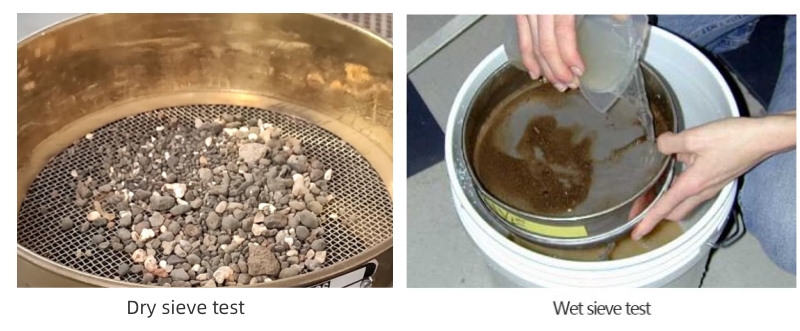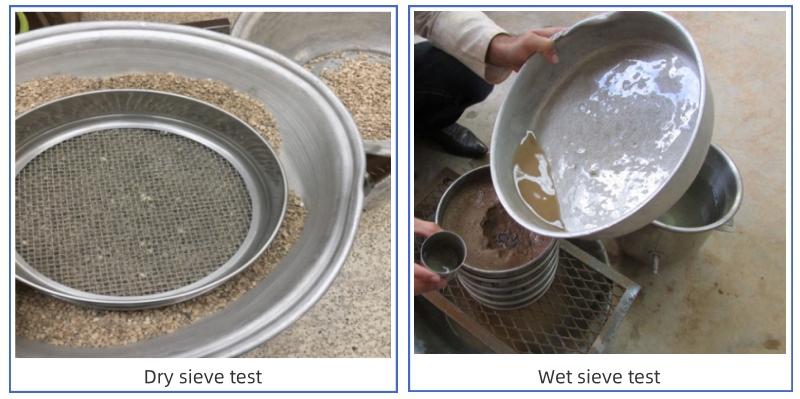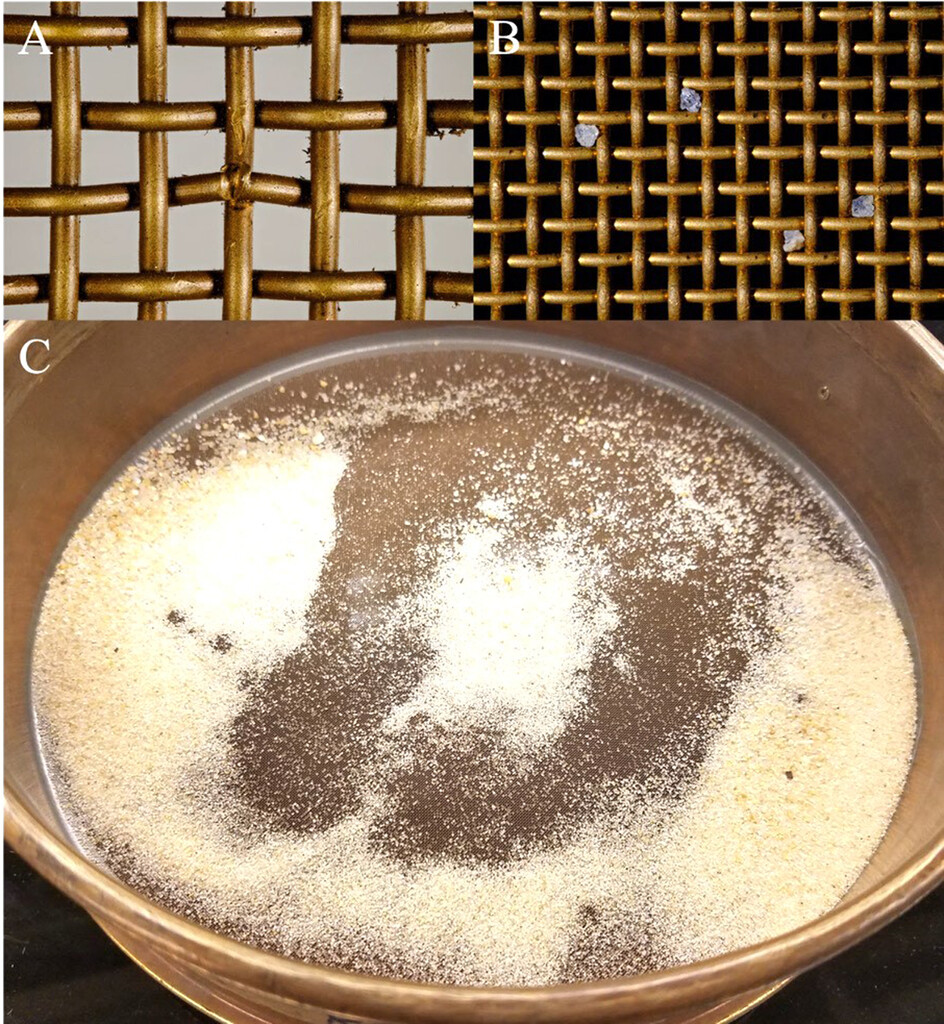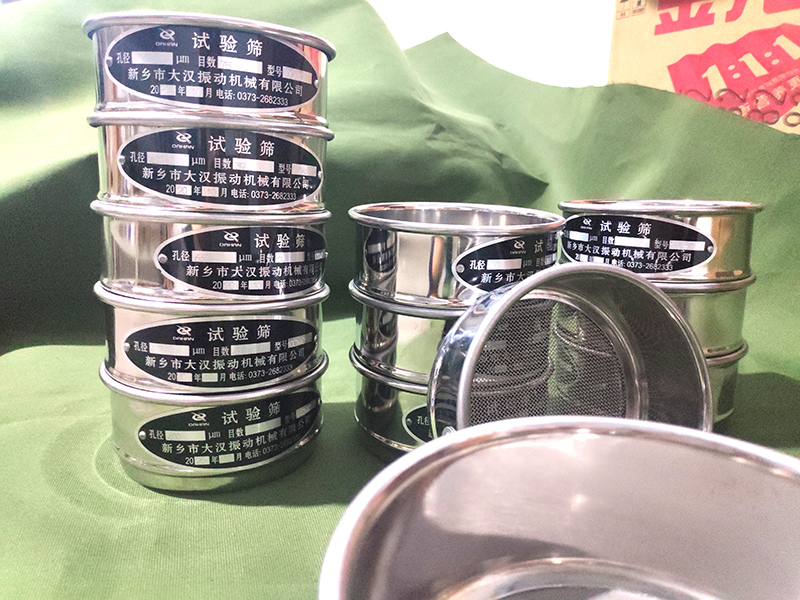Dry and wet sieving are two common methods of particle classification and screening, and they have some obvious differences in how they handle materials. The differences between these two screening methods are explained in detail below.


Dry sieve test: Dry sieving is a sieving process performed without the intervention of liquid. The material is classified through the sieve holes under dry conditions.
Wet sieve test: Wet sieve is a screening process carried out with the intervention of liquid. The material is mixed with the liquid to form a suspension, which is classified through the sieve holes under humid conditions.
strong>Dry sieve test: Dry sieve is usually suitable for granular materials with good fluidity and dryness, such as sand, ore, plastic particles, etc. These materials do not require liquid for wetting and can be classified directly through the sieve holes.
Wet sieve test: Wet sieve is suitable for granular materials that are sticky or easily hygroscopic, such as powders, granular drugs, ceramic materials, etc. By adding liquid to the material, the adhesion between particles can be reduced and the screening effect improved.

Dry sieve test: Dry sieve does not involve liquid, so the screen is relatively easy to clean. Under normal circumstances, only the material needs to be removed from the screen.
Wet sieve test: Wet sieve involves liquid intervention, and there may be suspended matter or sediment on the screen. Therefore, screen cleaning is required after wet screening to ensure the normal operation of the screen.
Dry sieve test: Dry sieve can achieve better screening effect, because the material is relatively loose in the dry state, the interaction force between particles is small, and it is easy to pass through the sieve holes.

Wet sieve test: Wet sieve can improve the adhesion between particles and improve the screening effect. The presence of liquid can make it easier for particles to pass through the screen and reduce the occurrence of clogging or sticking.

Dry sieve test: Dry sieve is generally faster than wet sieve because dry materials have less resistance during the screening process and the particles can pass through the sieve holes faster.
Wet sieve test: Wet sieve is slower than dry sieve because the presence of liquid will increase the resistance during the screening process and reduce the screening speed.

In summary, dry sieving is suitable for materials with good fluidity and dryness, while wet sieving is suitable for materials that are sticky or easily hygroscopic. Dry screening does not involve liquid, the screen cleaning is relatively easy, and the screening speed is relatively fast; while wet screening involves liquid intervention, screen cleaning is more important, and the screening speed is relatively slow. According to the nature of the material and screening requirements, selecting an appropriate screening method can improve the screening effect and production efficiency.
Address:China,Yanjin county forest park gate to the west 1000 meters north road.